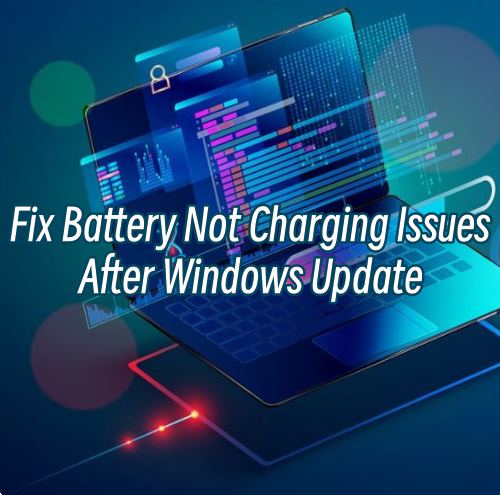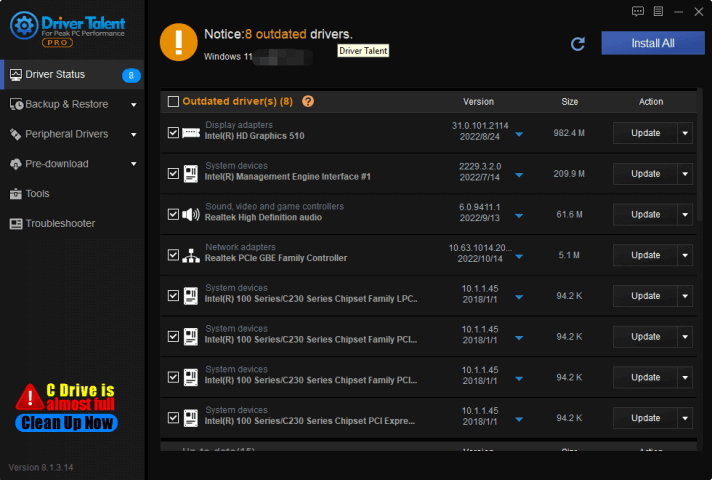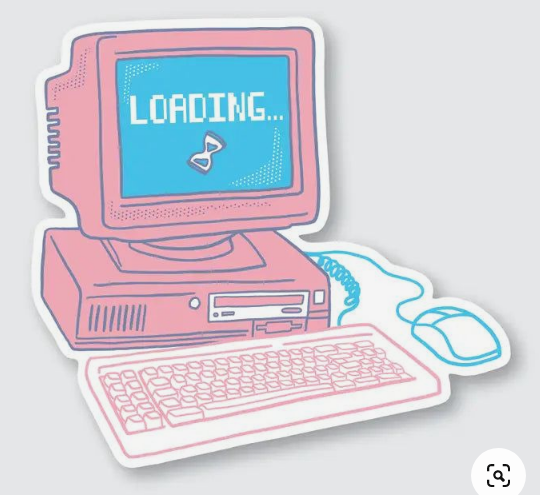Fix Battery Not Charging Issues After Windows Update
May. 31, 2023 / Updated by Renata to Windows 10

Why the Battery Not Charging After Windows Update
1. Power settings: The Windows update may have changed your power settings, causing the battery not to charge. To check and adjust your power settings, follow these steps:
2. Driver issues: Sometimes, a Windows update can cause conflicts with your battery drivers, preventing it from charging properly. To address this, you can try updating or reinstalling the battery drivers.
3. BIOS/UEFI settings: It's also possible that the Windows update affected the BIOS/UEFI settings related to power management. You can try resetting the BIOS/UEFI settings to their defaults to see if it resolves the issue.
4. Battery hardware issues: If none of the software-related solutions work, there might be a hardware problem with your battery. It's possible that the timing of the Windows update coinciding with a failing battery is coincidental. In such cases, it's advisable to contact the manufacturer's support or bring your device to a qualified technician for further diagnosis and repair.
Remember to check for any additional software updates for your device, including firmware updates, as they might provide fixes or improvements related to battery charging.
Here are some steps you can take to diagnose and fix battery charging issues after a Windows update:
Step 1: Check the Power Settings
Step 4: Perform a Battery Calibration
Step 1: Check the Power Settings
The first thing to check when your battery is not charging after a Windows update is your system’s power settings. In some cases, the update may have changed some settings, causing the issue.
To check the power settings
1. Click on the battery icon in the system tray.
2. Click "Power and sleep settings."
3. Click "Additional power settings."
4. Click "Change plan settings" next to your current power plan.
5. Click "Change advanced power settings."
6. Expand the "Battery" section and ensure that the settings are correct.
7. Ensure that the option under "Plugged in" is set to "High performance" or "Balanced."
Step 2: Update Drivers
If the power settings are correct, the next step is to check if your system’s drivers are up to date. When a Windows update occurs, some drivers may become outdated or corrupted, resulting in the battery issue.
To update drivers:
1. Download and install Driver Talent
2. Click on the "Scan" button to scan your computer for outdated, missing, or corrupt drivers.
3. Once the scan is complete, you will see a list of all the problematic drivers on your computer.
4. Click on the "Download" button next to the driver you want to update or install.
5. Wait for the download to finish, then click on the "Install" button to install the new driver on your computer.
6. You can also use Driver Talent to backup and restore your drivers or to uninstall unwanted drivers.
7. Once you have installed all the necessary drivers, restart your computer to apply the changes.

Step 3: Check the Battery
When the battery is not charging after a Windows update, it’s possible that the battery itself is the issue. In some cases, the battery may have reached the end of its life and needs replacing.
To diagnose the battery:
1. Shut down your computer and unplug it from the power source.
2. Remove the battery from the computer. Depending on your device, the battery may be removable or attached to the motherboard.
3. Inspect the battery for any damage, bulges or cracks.
4. Reinsert the battery and try charging it again.
If the battery isn't damaged and the issue persists, you may need to purchase a new battery for your device.
Step 4: Perform a Battery Calibration
If the steps above don't solve the issue, you can try calibrating the battery. Battery calibration helps your system's power management software recognize and calculate the battery's charge level.
To perform a battery calibration:
1. Shut down your computer and unplug it from the power source.
2. Remove the battery from the computer.
3. Press and hold the power button for 30 seconds to drain any remaining power.
4. Reinsert the battery and turn on your computer.
5. Plug in your computer to the power source and allow the battery to charge fully.
6. Once the battery is fully charged, unplug the computer and wait for the battery to discharge fully.
7. Repeat steps 5 and 6 until the battery is full to discharge 2-3 times.

If none of the above steps resolve the issue, you can try resetting your system's hardware and firmware settings. The process for resetting these settings may vary depending on your computer manufacturer, so be sure to check the manufacturer's website for instructions relevant to your device.
Final Thoughts
Battery charging issues after a Windows update can be frustrating, but following the steps above can help you diagnose and resolve the issue. Checking your power settings, updating drivers, and performing a battery calibration are some of the most common solutions that can fix the problem. If none of these solutions work, it may be necessary to purchase a new battery or contact the manufacturer for support.

|
ExplorerMax |

|
Driver Talent for Network Card | |
| Smart and advanced file explorer tool for Windows platforms | Download & Install Network Drivers without Internet Connection | |||
| 30-day Free Trial | Free Download |







